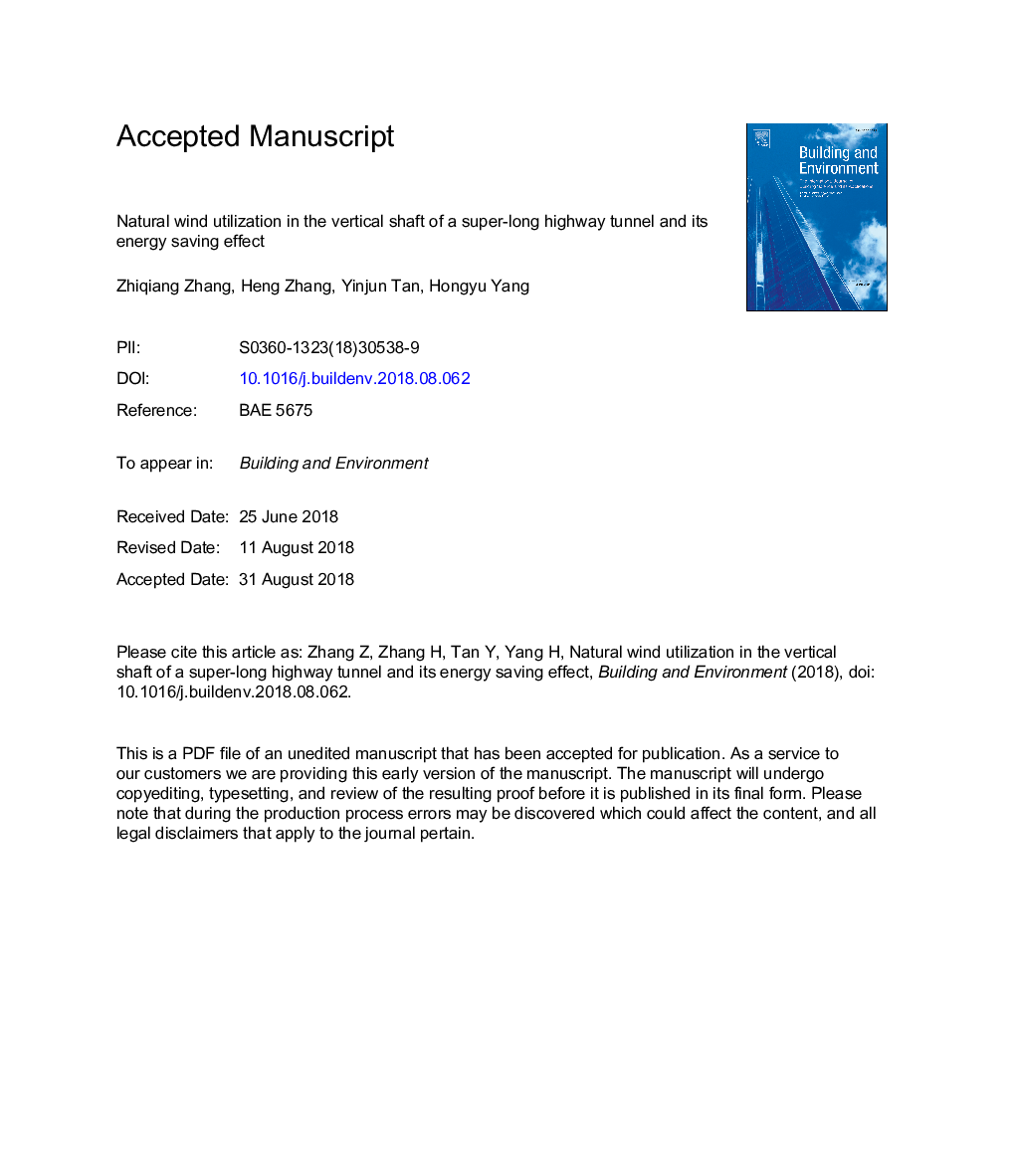| Article ID | Journal | Published Year | Pages | File Type |
|---|---|---|---|---|
| 10150704 | Building and Environment | 2018 | 39 Pages |
Abstract
The understanding of natural ventilation in super-long tunnels can help to optimize the design of ventilation systems and reduce energy consumption and maintenance costs. This paper studied the energy-saving effect of natural ventilation in a newly built shaft, optimized the diameter and position of the shaft, and discussed the reasonable reduction of the number of jet fans in the original ventilation system. A field test of natural ventilation was carried out to validate a theoretical calculation and numerical model. The results show that the thermal potential difference has a greater influence on the natural ventilation effect. With a shaft, even if the temperatures at the tunnel inlet and outlet are the same, good natural ventilation can be generated. The natural wind velocities of the two ventilation sections divided by the newly built shaft differ widely; the wind velocity on the right side of the shaft is greater than that of its left side. The shaft diameter should be determined according to the natural wind velocity and construction cost, and the position should be located in the middle of the ventilation section, on the windward side. Ten to 12 less jet fans could be used when the natural wind velocity in the shaft is greater than 3â¯m/s.
Related Topics
Physical Sciences and Engineering
Energy
Renewable Energy, Sustainability and the Environment
Authors
Zhiqiang Zhang, Heng Zhang, Yinjun Tan, Hongyu Yang,
